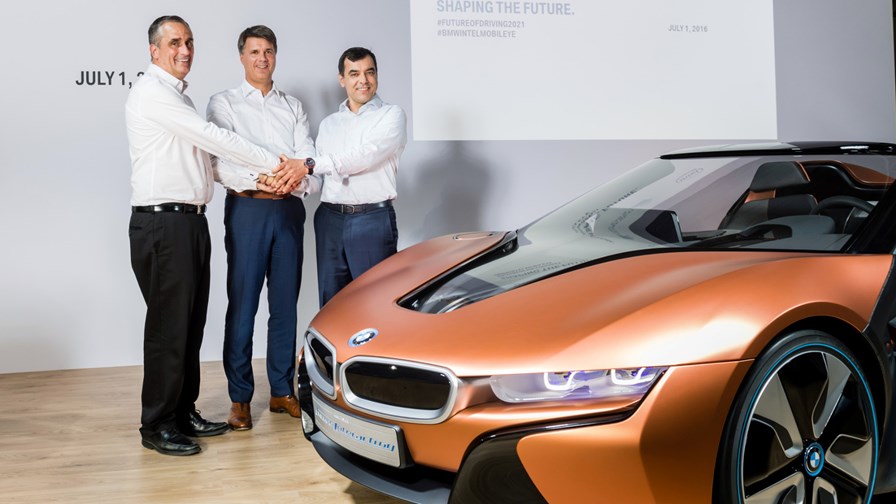
© Intel, BMW
- Collaboration between BMW Group, Intel and Mobileye
- Focus of delivering Level 3 to Level 5 connected car autonomy
- Fully autonomous driving expected by 2021, say the partners
- Highly automated driving prototype expected before 2017
BMW Group, Intel and Mobileye are creating an open platform for the next generation of cars to create the safest possible end-to-end autonomous platform, aligning the industry on a standards-based platform to speed up time to market.
The goal of the collaboration is to develop future-proofed solutions that enable the drivers to not only take their hands off the steering wheel, but reach the so called “eyes off” (level 3) and ultimately the “mind off” (level 4) level, transforming the driver’s in-car time into leisure or work time. This degree of autonomy would enable the vehicle to achieve the final stage of traveling “driver off” (level 5) without a human driver inside. This establishes the opportunity for self-driving fleets by 2021 and lays the foundation for entirely new business models in a connected, mobile world.
For a bit of background, the motor industry has already defined six levels of automation. These start at Level 0, where there is absolutely no automation whatsoever, and moves on to Level 1 “Assisted”, where the “driver continuously performs the longitudinal or lateral dynamic driving task”, for example Park Assist functions that are becoming commonplace today. Level 2 “Partial Automation” is described as “driver must monitor the dynamic driving task and the driving environment at all times”, for example traffic jam assistance. That’s where we are today; Level 3 technology is expected from now until 2025, with Level 4 running from 2025 to 2030. Level 5 is still 15 to 20 years away, according to the industry, which is somewhat later than BMW and Intel’s more aggressive “common platform” timeline.
The common platform and reference architecture envisioned by Intel, BMW and Mobileye will address level 3 to level 5 automated driving and will be made available to multiple car vendors and other industries who could benefit from autonomous machines and deep machine learning. Near term, the companies say they will demonstrate an autonomous test drive with a “highly automated driving” prototype, extending this platform to fleets during 2017.
“Highly autonomous cars and everything they connect to will require powerful and reliable electronic brains to make them smart enough to navigate traffic and avoid accidents,” said Intel CEO Brian Krzanich. “We bring a broad set of in-vehicle and cloud computing, connectivity, safety and security, and machine-learning assets to this collaboration enabling a truly end-to-end solution.”
Mobileye will contribute its sensing, localisation and driver policy skills, developing its system-on-a- chip products and deploying its fusion algorithms on Intel computing platforms. In addition, its Road Experience Management technology will provide real-time precise localisation and model the driving scene to essentially support fully autonomous driving.
“Following our investment in high-definition live map technology at HERE, the combined expertise of Intel, Mobileye and the BMW Group will deliver the next core building block to bring fully automated driving technology to the street,” said Harald Krüger, Chairman of the Board of Management of BMW. “We have already showcased such ground breaking solutions in our VISION NEXT 100 vehicle concepts. With this technological leap forward, we are offering our customers a whole new level of sheer driving pleasure whilst pioneering new concepts for premium mobility.”
Email Newsletters
Sign up to receive TelecomTV's top news and videos, plus exclusive subscriber-only content direct to your inbox.




